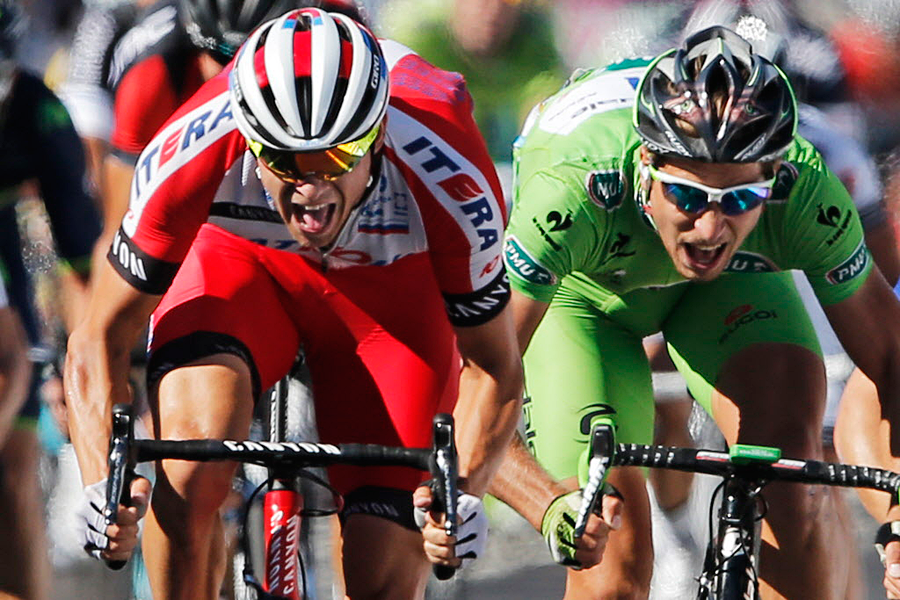Fear of motors at Tour de France sparks 'mechanical doping' crackdown
Loading...
The Tour de France has teamed up with the country's nuclear research agency to stop "mechanical doping" at cycling's premiere race, which begins Saturday.
The French Atomic Energy Commission, have attached thermal imaging cameras to tablets that organizers will deploy along undisclosed stages of the 2,200-mile race in an attempt to eradicate the use of miniature motors hidden inside bikes.
As the cycling world seeks to move past the doping scandals of its top athletes, including past Tour de France winners Lance Armstrong and Alberto Contador, the wide-scale implementation of these cameras sends a "clear message," said Brian Cookson, president of the International Cycling Union.
"There is literally nowhere to hide for anyone foolish enough to attempt to cheat in this way," said Mr. Cookson, according to the Associated Press.
"This is the future of cycling that's at stake," France's Secretary of State for Sports Thierry Braillard told Le Journal du Dimanche, according to NPR. "This problem is worse than doping."
In mechanical doping, a miniature motor is hidden inside a bicycle. Although it might only provide up to 60 extra watts of power, that can be enough to put a rider atop the podium.
"Some people may claim that these electronic assists are too small to matter but if you're getting a 1 or 2 percent boost going up a hill, in a race at that level, it's the difference between winning and losing," Wes Cheney, a cycling technology expert, told The Christian Science Monitor in February.
Most electric bicycles, or e-bikes, are easy to recognize. They have large motors and batteries. "The hidden versions are far more subtle," writes Bicycling magazine. A motor can be inserted into the bike's seat tube that connects to the pedals and gears, and it can be turned on and off with a button attached to a false water bottle. An even subtler version employs rare-Earth magnets in the wheels and a Bluetooth-activated induction coil in the seat.
The Thermal imaging cameras France's Atomic Energy Commission have attached to tablets can detect these "mechanical anomalies," according to a Tour de France press release. A magnetic resistance test is performed with software that can detect, in less than 30 seconds, motors, magnets, and batteries in a bicycle's frame, wheel hubs, and rims, according to the Associated Press. Even if the motor is turned off, the camera will be able to detect the heat the motor produced. The cameras will be used on riders during the race.
Ever since 2010, cyclists have warned about mechanical doping, and how easy it is to install and conceal. Michele Bufalino, an Italian cycling expert, produced a YouTube video that showed how to moto-dope. In 2015, three-time winner of the Tour de France Greg LeMond built his own version, and demonstrated how easy it is to hide the motor and false water bottle. But it wasn't until January that cyclists learned how mechanical doping can ruin the integrity of the sport.
A hidden motor was found in the bicycle of an up-and-coming female cyclocross rider. Femke Van Den Driessche of Belgium said the bike belonged to a friend. UCI didn't buy it. It banned the 19-year-old from the sport for six years, and fined her 20,000 Swiss Francs (about $20,400), delivering a strong warning to other professional cyclists.
Some are skeptical at how effective thermal imaging cameras will be. Mark Barfield, UCI's technical manager, indicated it would be possible to cover the motor in a thermal shield to prevent detection, according to Cycling News.
Others, however, argue the action is a step in the right direction.
"What I like is that there's been a collective effort," said Christian Prudhomme, director of the Tour de France. "I think the cycling world had an electro-shock in January because what had previously been only a rumor was confirmed by a positive case. It's been a race against time since then."







